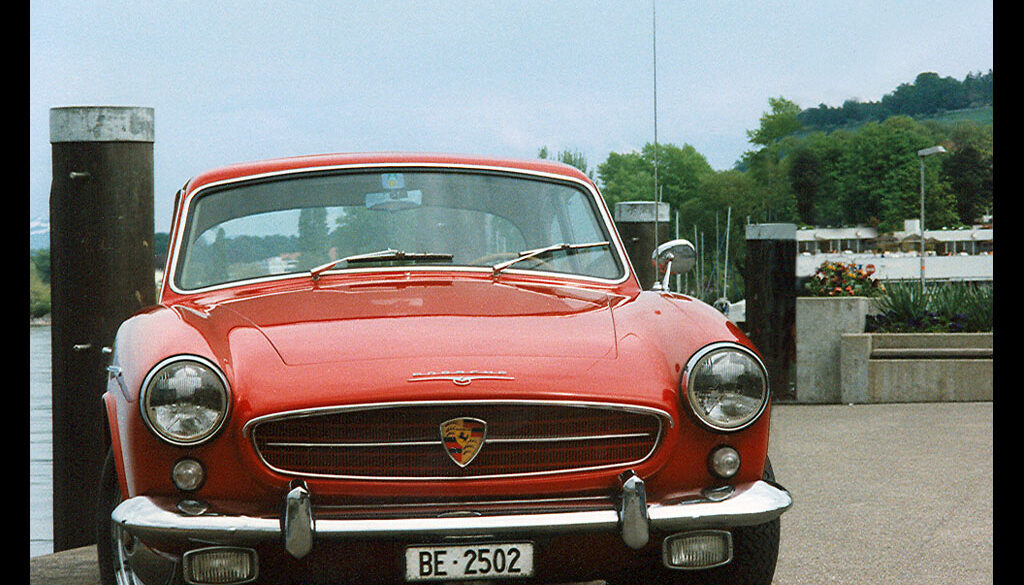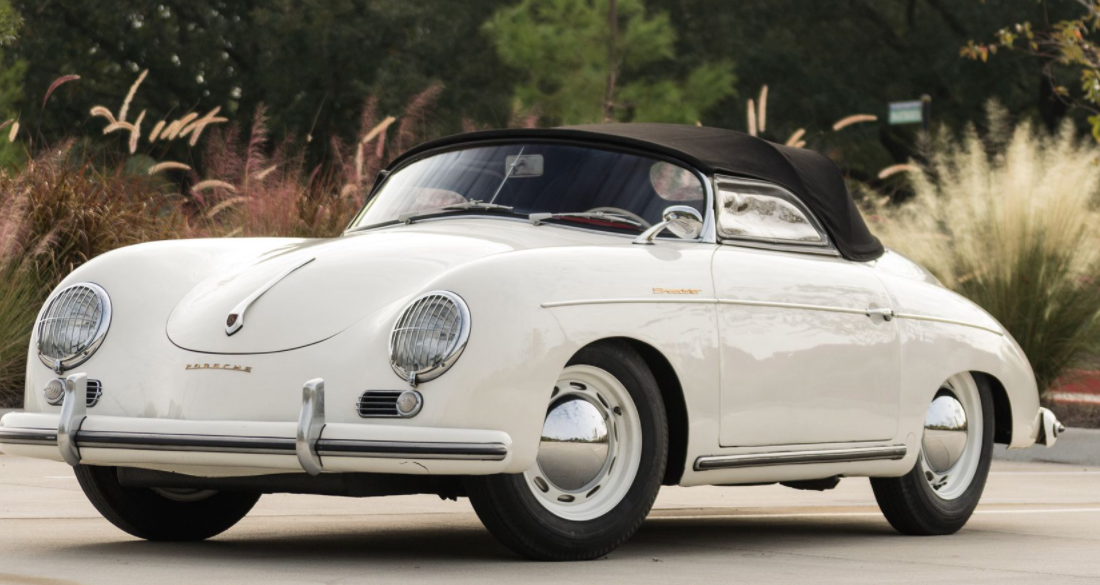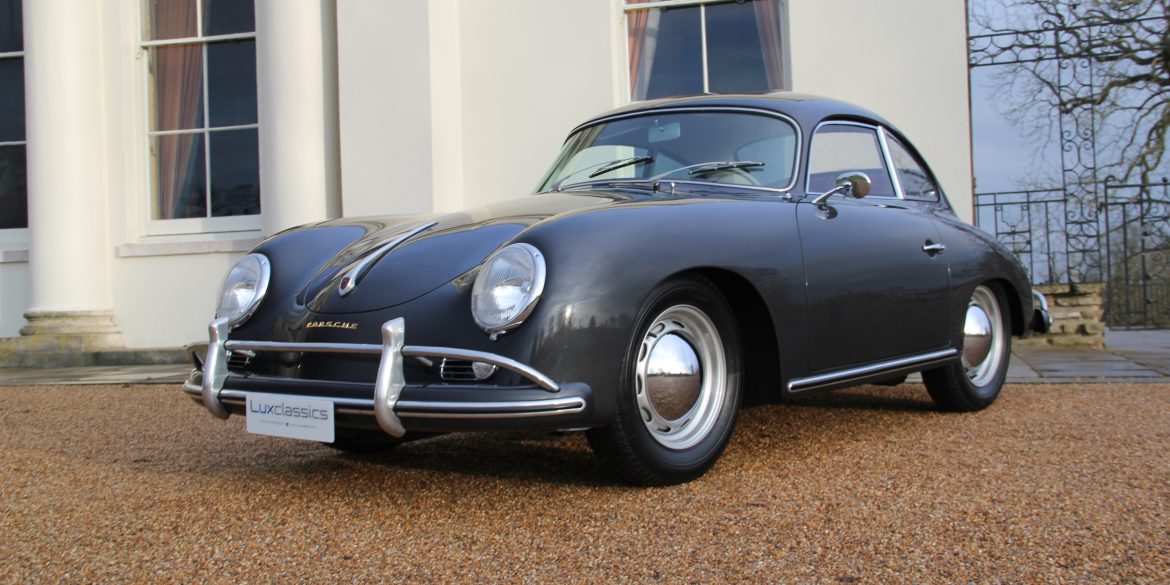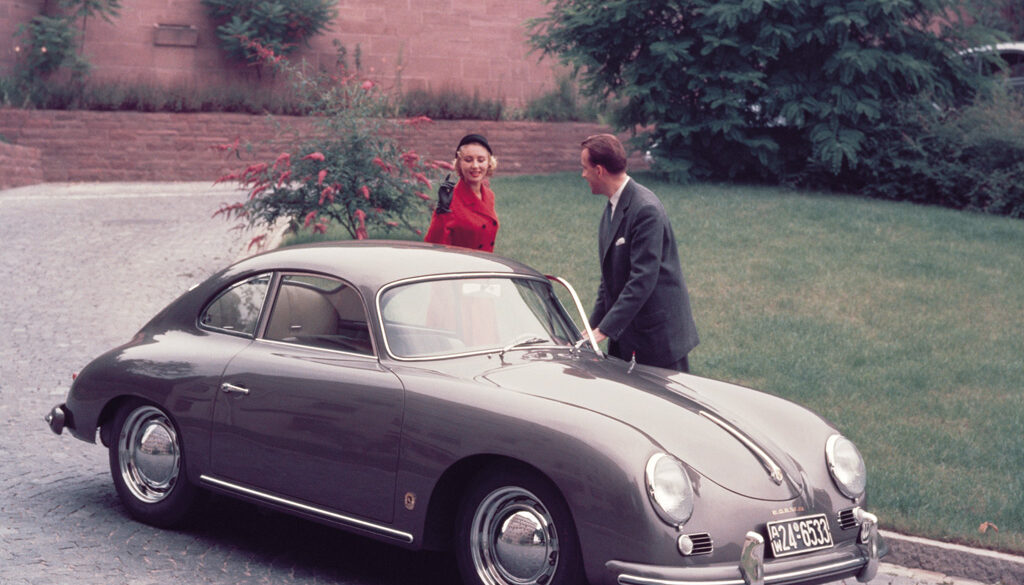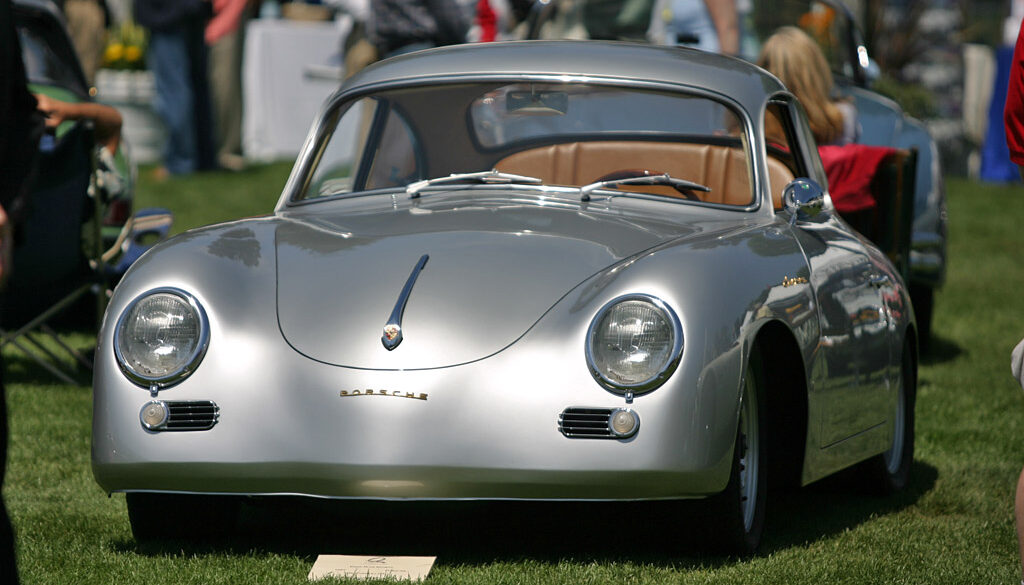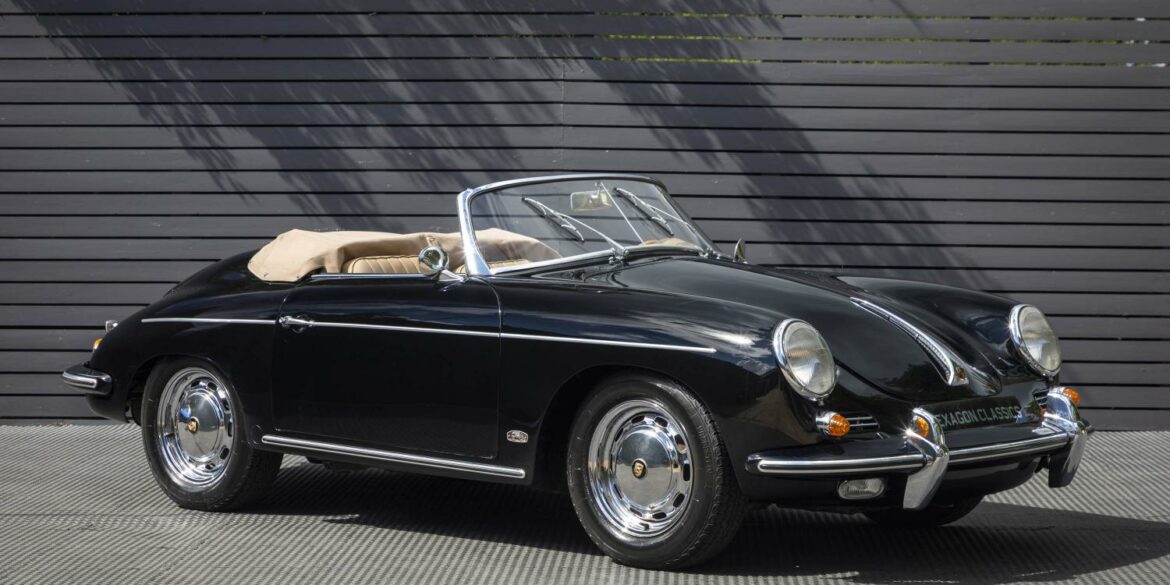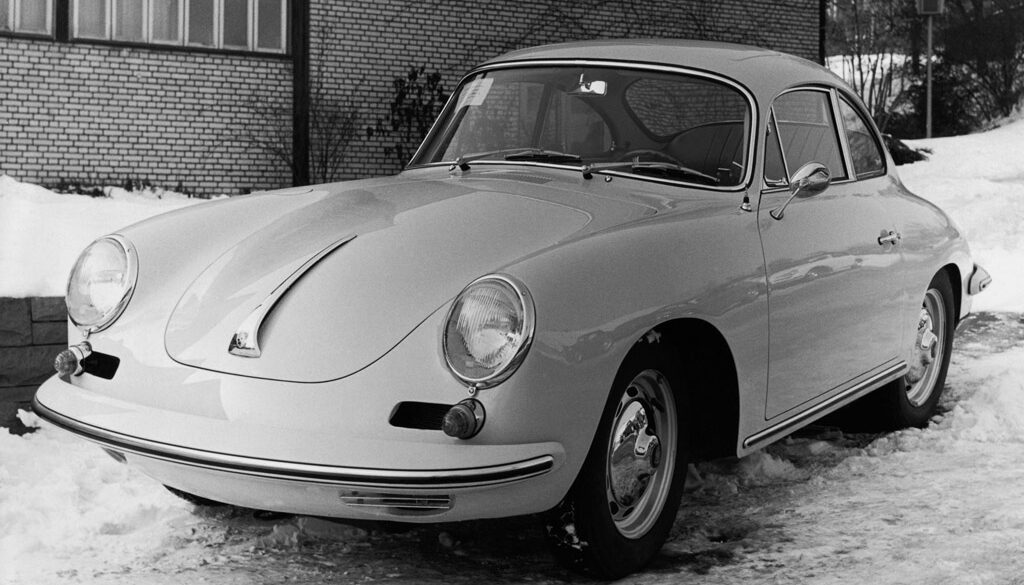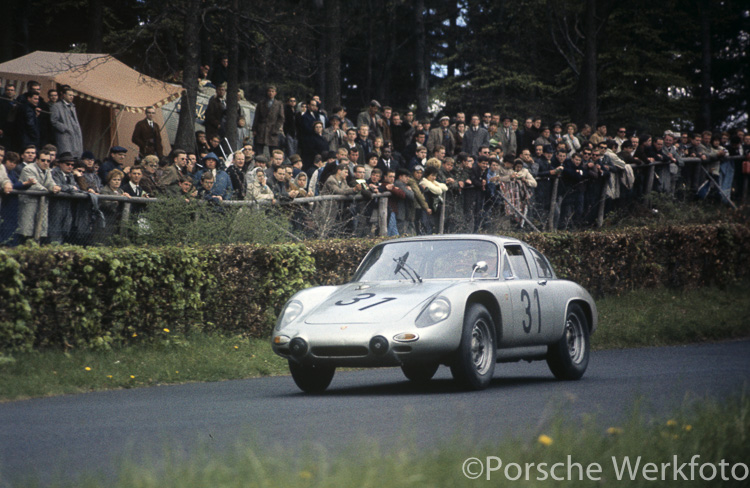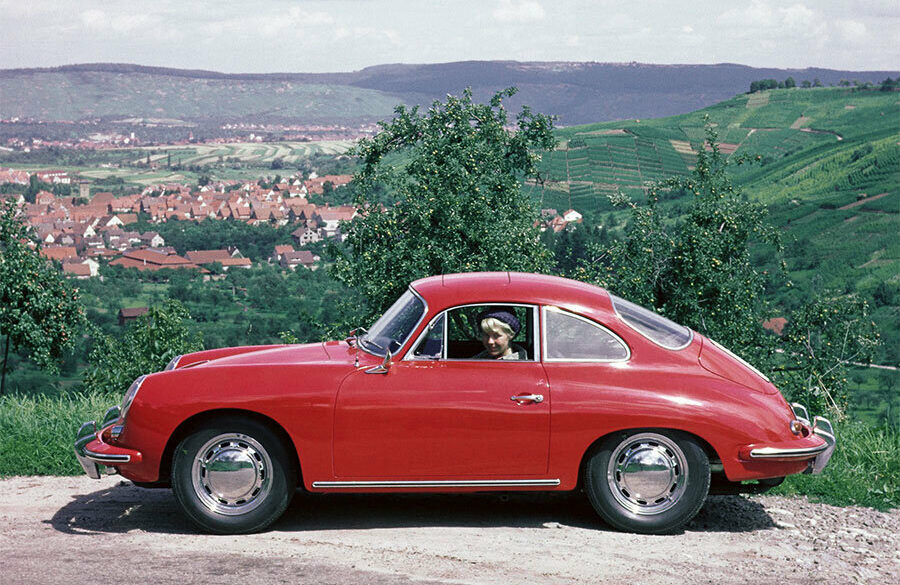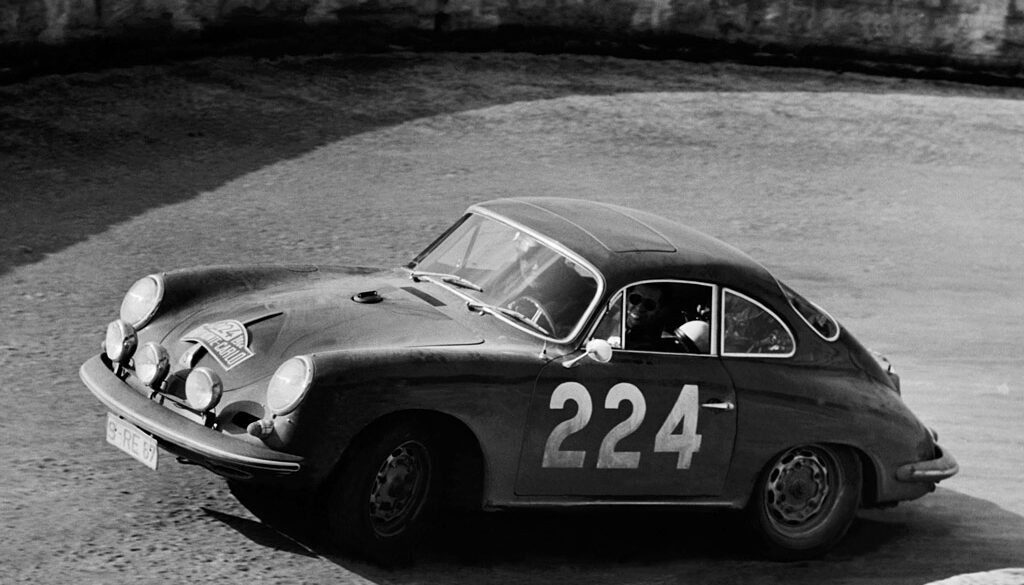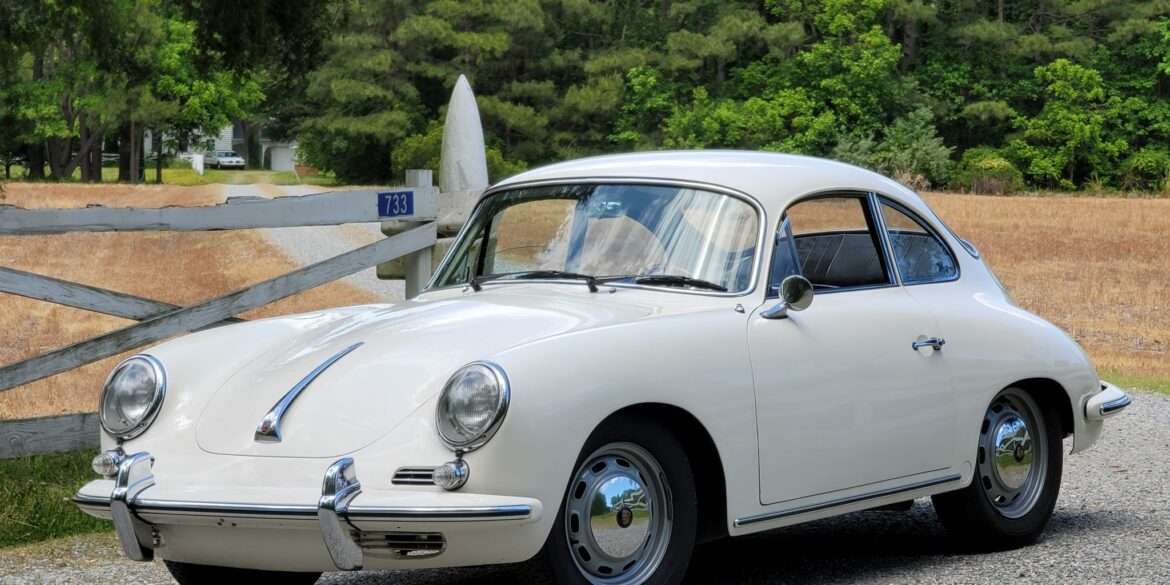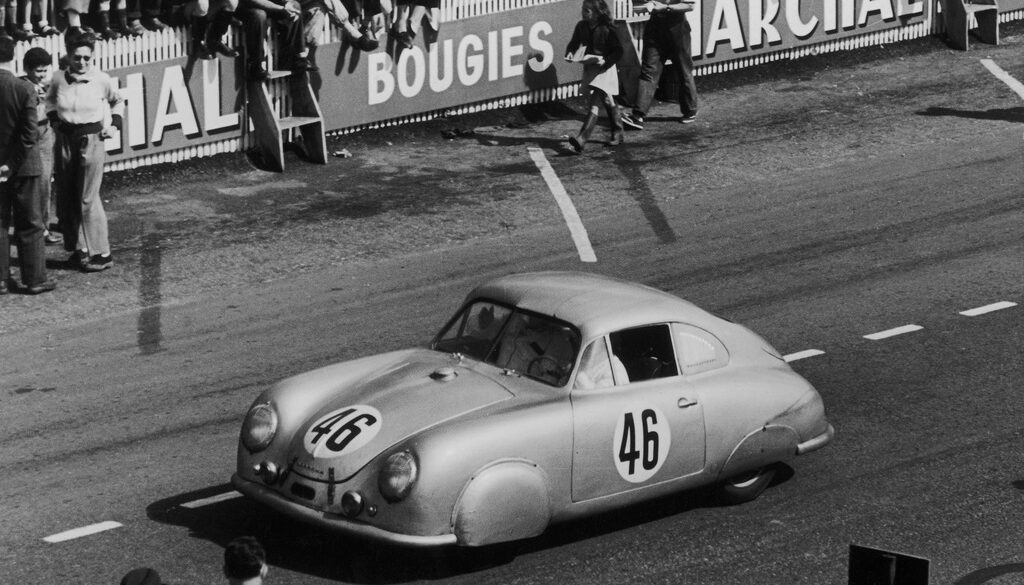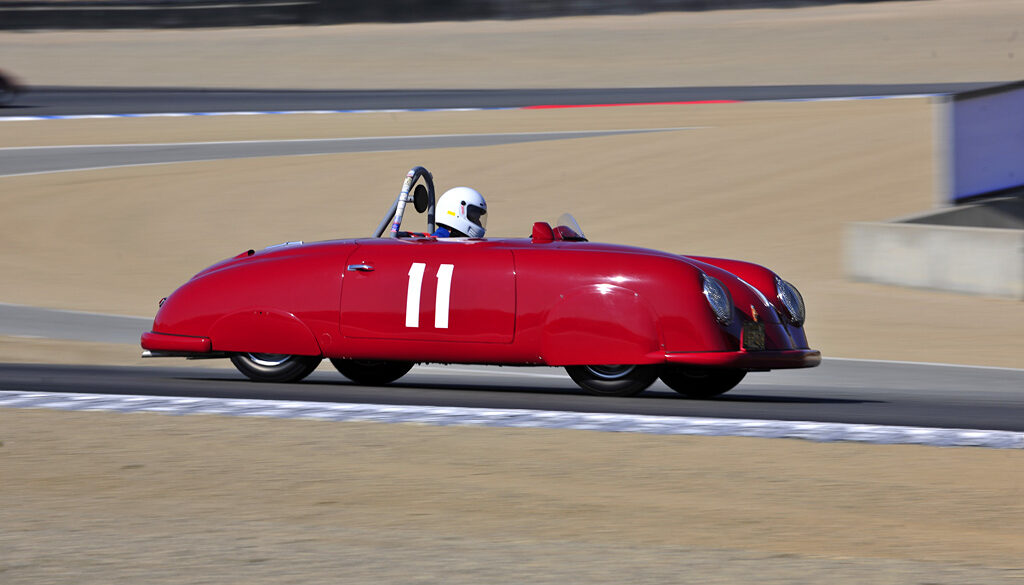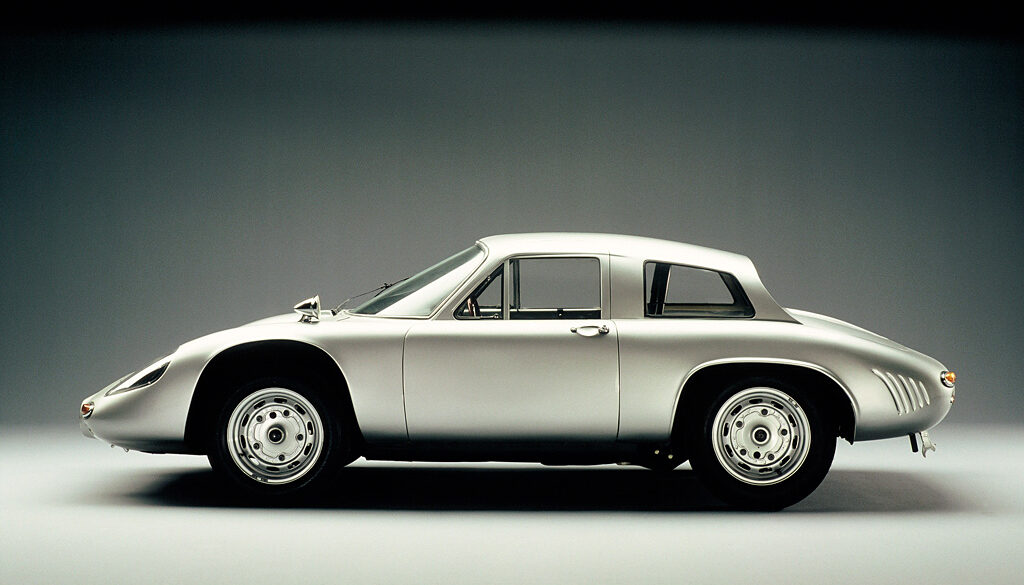This isn't technically a Speedster, but the Type 540 (Typ 540 K/9-1 to be very precise) - known more commonly as the America Roadster - started the idea. The American Roadster was the direct predecessor of the Speedster. U.S. importer Max Hoffman convinced Porsche it needed a lightweight convertible to compete. It only had an emergency folding roof and could keep up with larger sports cars of the era. But the production methods used to create the America Roadster’s aluminum body proved to be too expensive, and in 1952 Porsche built only 21 units before its discontinuation in 1953.
Ferry Porsche had in fact requested Swiss technicians to make a less sporty and more elegant version of the 365 B and thus the 1600 Beutler Coupè was born. This project is a 2+2 based on a Porsche 1600. Like the Porsche, the car is built on a VW platform, but includes Porsche elements such as the brakes and the engine. It was built in 5 copies before production was stopped in 1957 due to a change in commercial strategies by the German company.
Beginning in 1954, a new version of the Pre A 356 was introduced that is now known as the Porsche 356 Pre-A Carrera, with a powerful engine that was available in coupe, cabriolet, and Speedster variants. Highly desirable today, the Carrera name denotes the race inspired 1500 cc four cam motor that produced an astounding 110 hp. Approximately 97 of these motors were produced sometime between 1954 and early 1955. The Carrera versions would continue in the next generation 356 as the Porsche 356 A Carrera.
An export hit, built in response to customer demand: the American importer Max Hoffman requested a Porsche costing less than 3,000 dollars for his market. The 356 Speedster was the answer, naturally with a spartan equipment specification. But the lightweight car was a big hit in the USA. It was used mainly for motor racing and soon became a regular feature of the motor sport scene.
Generally speaking the early models or so called ‘Pre A 356′ models are more desirable than the later models. At the top of the pyramid and the most exclusive is the Carrera version which carries the legendary 4 cam ‘Fuhrman’ engine. But just below that comes the ‘Super’ speedster. The ‘super’ version had more horsepower (75 vs the standard 60) and the powerful ‘type 528 engine’ for the 1500 Super version.
From the outside, the 356A kept to the Porsche mantra of stepwise evolution. The new model was outwardly identical to the previous version except for the wider tires, a small rub-strip below the doors, a fully-curved front window and enamel paint replacing lacquer previously used. The 356 A came with an all-alloy air-cooled Flat 4 engine in four states of tune, with the 1300 having Type 506/2 engine with 44 bhp and 60 lb-ft.
From the outside, the 356A kept to the Porsche mantra of stepwise evolution. The new model was outwardly identical to the previous version except for the wider tires, a small rub-strip below the doors, a fully-curved front window and enamel paint replacing lacquer previously used. The 356 A came with an all-alloy air-cooled Flat 4 engine in four states of tune, with the 1300 having Type 589/2 engine with 60 bhp and 65 lb-ft of torque.
Available in all body styles, the Porsche 356 A Carrera featured the race car-derived 1500 cc four-cam engine (type 547) developed for the Porsche 550 Spyder. Rated up to 110 hp, it was the top performance 356 A model available. Variants included the Carrera 1500GS and Carrera 1500GT, differentiated by their horsepower. In 1958, Porsche updated the Carrera engines (now type 692), increasing the displacement up to 1600 cc and output increased to 105 and 110 hp respectively. In 1959 horsepower for the GT increased again to 115.
In May of 1957, Porsche offered two distinct versions of the Carrera, one called the de Luxe for the street and this model, the Gran Turismo, for the track. The main difference between the two models was weight. The Carrera GT was a purpose-built car with little on board amenities. For instance, no heater was fitted giving the car its 'icebox' nickname. Furthermore, the interior was stripped of sound deadening, side windows were replaced by pull-up Perspex units and only simple door panels were fitted.
Despite looking outwardly similar to the preceding models, Porsche thoroughly updated their 356 line in 1956 and called their new model the 356A. At the core, this included a larger 1600 cc engine, but also a curved-glass windshield and a thoroughly revised suspension. At the 1955 Frankfurt Motor Show in September of 1955, Porsche released the 356A/1600 to the world with cabriolet, coupe and speedster bodies from Reutter. Produced in 1959 only, the Porsche 356 Convertible D was the replacement for the 356 A Speedster, which was discontinued after 1958.
Of all the Carreras, the 1959 de Luxe was best suited for the road. Not only was it the most luxurious 356, but it was also was the only year to get the large 1600cc 4-cam engine. The Type 692/2 engine was a much different engine than the 1500cc unit it replaced. The newer unit used plain main bearings instead of roller bearings. Furthermore, the distributors were moved to the end of the crankshaft and the engine shroud was better attached to the 356A body. With twin Solex carburetors, the somewhat detuned version offered 105 bhp @ 6500 rpm.
Following the Pre-A prototypes and a run of quad-cams with the 1500cc engine, the 1600 Carrera GT was a performance 356 that used a larger version of the Porsche 550 Spyder's potent engine. As early as 1958, some Carreras were fitted with a larger engine known as the Type 692. The new unit featured a larger displacement which was better suited for the 1600cc class. Furthermore, it was improved considerably adopting plain bearings and new ignition system.
Despite looking outwardly similar to the preceding models, Porsche thoroughly updated their 356 line in 1956 and called their new model the 356A. At the core, this included a larger 1600 cc engine, but also a curved-glass windshield and a thoroughly revised suspension. At the 1955 Frankfurt Motor Show in September of 1955, Porsche released the 356A/1600 to the world with cabriolet, coupe and speedster bodies from Reutter. The 356A/1600 was a great performer, good for a sprint to 60 mph in 13.5 seconds and hit a top speed of 109 mph.
The original Porsche Carrera Zagato Speedster, the first Zagato bodied Porsche of the brand’s history, was built in 1958 for French gentleman driver and expert Porsche pilot Claude Storez, one of the best French pilots of that time. He started his career in early 50s and became soon a skilled pilot. In late ’57 he was looking for the “ultimate” 356 for the 1958 races season. He put an order to Porsche AG for a 356 A Speedster (the lightest version available) with a Carrera engine and GS specs (the most powerful at that time).
The 356 B T5 Coupe was the direct replacement of the Porsche 356 A Coupe. The T5 Coupe bodies were produced by German coachbuilder company Reutter. The 356 B T5 Coupe played a huge role in the growth seen by Porsche in the early 1960s. Like the Cabriolet, Roadster, and Notchback Coupe siblings, the Coupe was offered with 1600, 1600S, S90, and Carrera engine options paired to a four-speed synchromesh 741 transmission. In late 1961, Porsche introduced the T6 body and updates, which built on the success of its very popular predecessor.
While all 356 Carreras are rare and desirable cars, the 1961 B Carrera GT is a very special animal indeed. Built from lightweight materials and sporting Porsche’s most powerful racing engine of the time, they were in a different league to the most highly specified road car that the Stuttgart factory then produced. Porsche produced only 49 of the 356B Carrera versions for 1960/61 and all were coupes. Many were painted Silver.
In September of 1959 Porsche revealed their fully updated 356 known as the 356B. This had a completely revised body that was more suitable for the American market. The 1600 Super was also known as the 1600 S and that is what we are covering on this page. The 1600 Super sat in the middle of the lineup, below the Super 90 and above the base 1600. There were several variants with the base 1600 S engine, including the Coupe, Cabriolet, Notchback Coupe and Roadster, across both the T5 generation and T6 generation.
In September of 1959 Porsche revealed their fully updated 356 known as the 356B. This had a completely revised body that was more suitable for the American market. New to the model was the Type 616/7 Super 90 engine which was an indirect replacement for the Carrera de Luxe models. The engine was fully revised with a new intake manifold, a larger Solex 40 PII-4 carburetor and the Carrera air filters.
As with the earlier versions, the Carrera was offered both in a Carrera GT Deluxe version for the road and the Carrera GT for racetrack duties. Unlike these earlier models, the new car benefited from the 2.0 liter engine introduced as the Carrera 2 was unveiled in September 1962. The 2.0 Carrera used a variant of the Type 547 engine with a larger bore and stoke, having 1966cc.
After a considerable absence of a Carrera model in the 356 model lineup, Porsche finally made another version with the introduction of a 2.0-liter engine. As with the earlier versions, the Carrera was offered both in a Carrera GT Deluxe version for the road and the Carrera GT for racetrack duties. Unlike these earlier models, the new car benefited from the 2.0 liter engine introduced as the Carrera 2 in September 1962.
One of the most confused of all Porsche is this DKS or Dreikantschaber. It might appear like a mid-engine RS61 Coupe, but it is a rebodied 356B with a rear-mounted engine. Unlike the earlier 356s, this one featured fared-in driving lights and cut-off greenhouse reminiscent of of the RS61 coupe. Porsche didn't give this new a car a name since it was homologated and considered a Carrera 2 by the FIA. It was nicknamed Dreikantschaber.
Introduced in 1963 for the 1964 model year, the base model Porsche 356 1600C Coupe was presented as the entry-level version of the last generation of the Porsche 356 Coupes. After offering standard/base model versions for the 356 A and 356 B with 60 HP engines, Porsche dropped the standard version as its base model and introduced the successor of the former mid-level 1600 Super engine variant with 75 HP, as the entry-level engine option for the 356 C generation. As with previous generations, it was also offered with the 356 C Cabriolet cars.
Amongst Porsche 356 enthusiasts, perhaps no model is more coveted than a C-Series Carrera 2. The Carrera 2 represents the culmination of Porsche’s racing technology fitted into a road car package and the ultimate performance-first sports car in the 356 model lineup. The 1,966-cubic centimeter, mechanically complex four-cam Type 587/1 engine was the most powerful unit that Porsche had ever created for a production car, developing 130 brake horsepower at 6,200 rpm.
The Porsche 356 SC, was the top-of-the-line variant in terms of performance for the 356 C Generation, sporting the highest specific output pushrod 4-cylinder engine ever available from Porsche with 107 HP. The SC engine produced 107 bhp at 5200 rpm and featured a stouter counter-weighted crankshaft, short skirt pistons, a more radical camshaft configuration, and large Solex carburetors. The SC was the natural successor of the previous generation Super 90 and represented the top-of-the-line variant for the final evolution of the Porsche 356.
In 1950, eleven remaining Gmund chassis were assembled after the factory returned to Germany and converted to SL (Sport Leicht) racing specification. They received 1,086-cc engines, enlarged fuel tanks, louvered quarter-window covers, wheel spats, streamlined aluminum belly fairings, and a pedestal-mounted shifter. Three Type 356/2 cars raced at Le Mans in 1951; two crashed, but 356/2-063 performed flawlessly, winning the 1,100-cc class.
When Porsche went to Le Mans, they reverted to aluminum shells made at their first factory in Gmünd, Austria. Three of these coupes, called 356 SL, raced Le Mans. All three Le Mans cars were shipped to America by Max Hoffman and sold to Fritz Kosler, Ed Trego and John von Neumann for SCCA racing. Before the 1952 races at Torrey Pines, von Neumann had Emil Diedt remove the coupe's roof, creating in effect the first Carrera Speedster.
A handful of push-rod 356As were delivered from the factory with a lightweight package that was usually reserved for the Carrera race cars. Called GTs, these got the stripped out interior, aluminum doors, a large fuel tank and Porsche ATE disc brakes. As few as four Speedsters came equipped this way. Since the four-cam was only a marginal improvement in power, the regular 1600 Super was more than enough for the small car.
Around 20 Super 90 Coupes were ordered with the lightweight GT package for racing. They used aluminum panels, a lightweight interior and plexiglas windows to shed over 200 lbs off the standard production coupe. Inside the car came equipped with a roll bar, leather-strap window lifts and speedster seats. Aluminum exterior panels included the doors, hood, rear deck lid.
In keeping with FIA regulations, Porsche created a new lightweight 356 with help from Abarth. After Porsche had considered numerous Italian companies to manufacture a lightweight 356 body, they settled on Abarth. Franco Scaglione penned the first initial drawings which attempted to reduce frontal area, overall height. Included was an adjustable scoop on the rear deck lid. Made entirely of aluminum, Abarth's body was smaller than the Reutter 356.
No Subscription? You’re missing out Get immediate ad-free access to all our premium content. Get Started Already a Member? Sign in to your account here....
Successful VW Dealer and racer Walter Glöckler built several specials for the German Car Championship including this roadster. It was built with assistance from Porsche in Zuffenhausen and raced without its optional hardtop in the 1952 champion before being shipped overseas for SCCA racing. Weidenhausen created the body from aluminum with a nose that bore close resemblance to the 356 Porsche but had semi-skirted rear wheels and cutaway rear corners similar to Glockler-Porsche 1 and 2.



